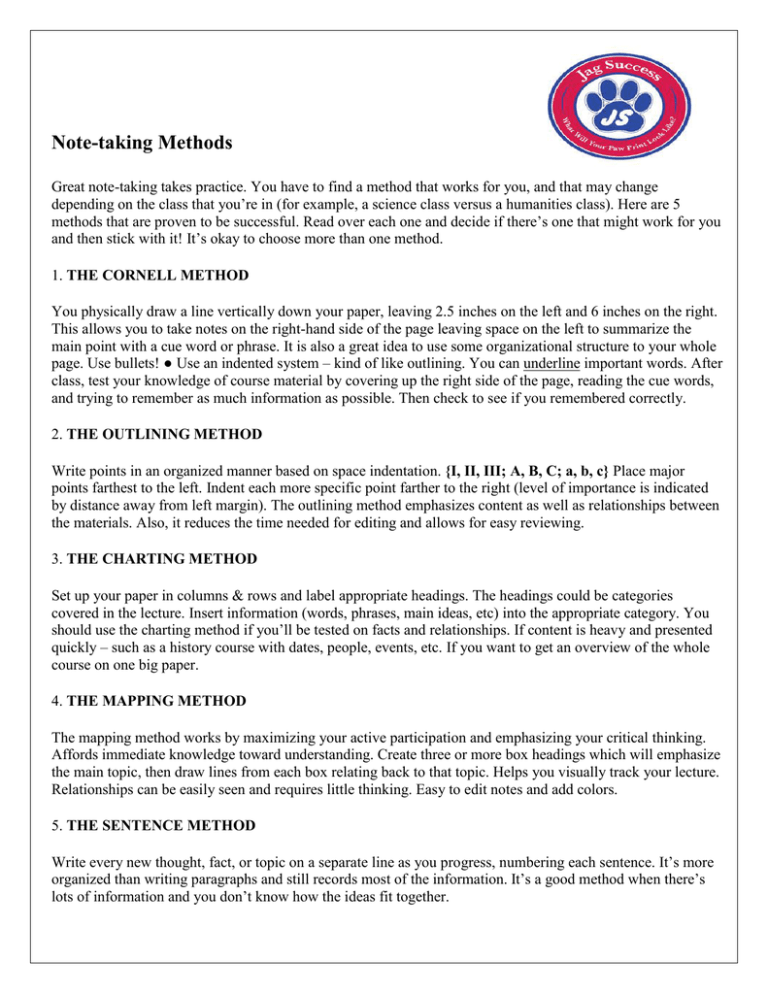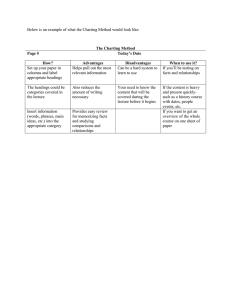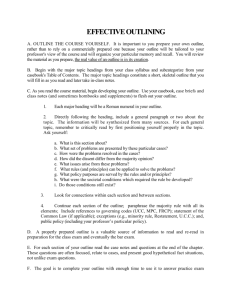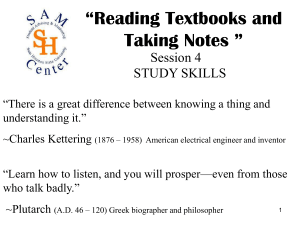Note-Taking Methods: Cornell, Outlining, Charting, Mapping, Sentence
advertisement

Note-taking Methods
Great note-taking takes practice. You have to find a method that works for you, and that may change
depending on the class that you’re in (for example, a science class versus a humanities class). Here are 5
methods that are proven to be successful. Read over each one and decide if there’s one that might work for you
and then stick with it! It’s okay to choose more than one method.
1. THE CORNELL METHOD
You physically draw a line vertically down your paper, leaving 2.5 inches on the left and 6 inches on the right.
This allows you to take notes on the right-hand side of the page leaving space on the left to summarize the
main point with a cue word or phrase. It is also a great idea to use some organizational structure to your whole
page. Use bullets! ● Use an indented system – kind of like outlining. You can underline important words. After
class, test your knowledge of course material by covering up the right side of the page, reading the cue words,
and trying to remember as much information as possible. Then check to see if you remembered correctly.
2. THE OUTLINING METHOD
Write points in an organized manner based on space indentation. {I, II, III; A, B, C; a, b, c} Place major
points farthest to the left. Indent each more specific point farther to the right (level of importance is indicated
by distance away from left margin). The outlining method emphasizes content as well as relationships between
the materials. Also, it reduces the time needed for editing and allows for easy reviewing.
3. THE CHARTING METHOD
Set up your paper in columns & rows and label appropriate headings. The headings could be categories
covered in the lecture. Insert information (words, phrases, main ideas, etc) into the appropriate category. You
should use the charting method if you’ll be tested on facts and relationships. If content is heavy and presented
quickly – such as a history course with dates, people, events, etc. If you want to get an overview of the whole
course on one big paper.
4. THE MAPPING METHOD
The mapping method works by maximizing your active participation and emphasizing your critical thinking.
Affords immediate knowledge toward understanding. Create three or more box headings which will emphasize
the main topic, then draw lines from each box relating back to that topic. Helps you visually track your lecture.
Relationships can be easily seen and requires little thinking. Easy to edit notes and add colors.
5. THE SENTENCE METHOD
Write every new thought, fact, or topic on a separate line as you progress, numbering each sentence. It’s more
organized than writing paragraphs and still records most of the information. It’s a good method when there’s
lots of information and you don’t know how the ideas fit together.





